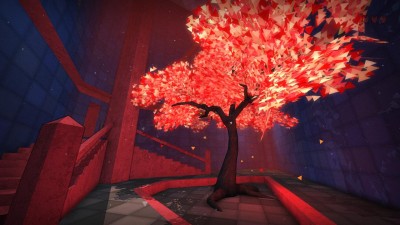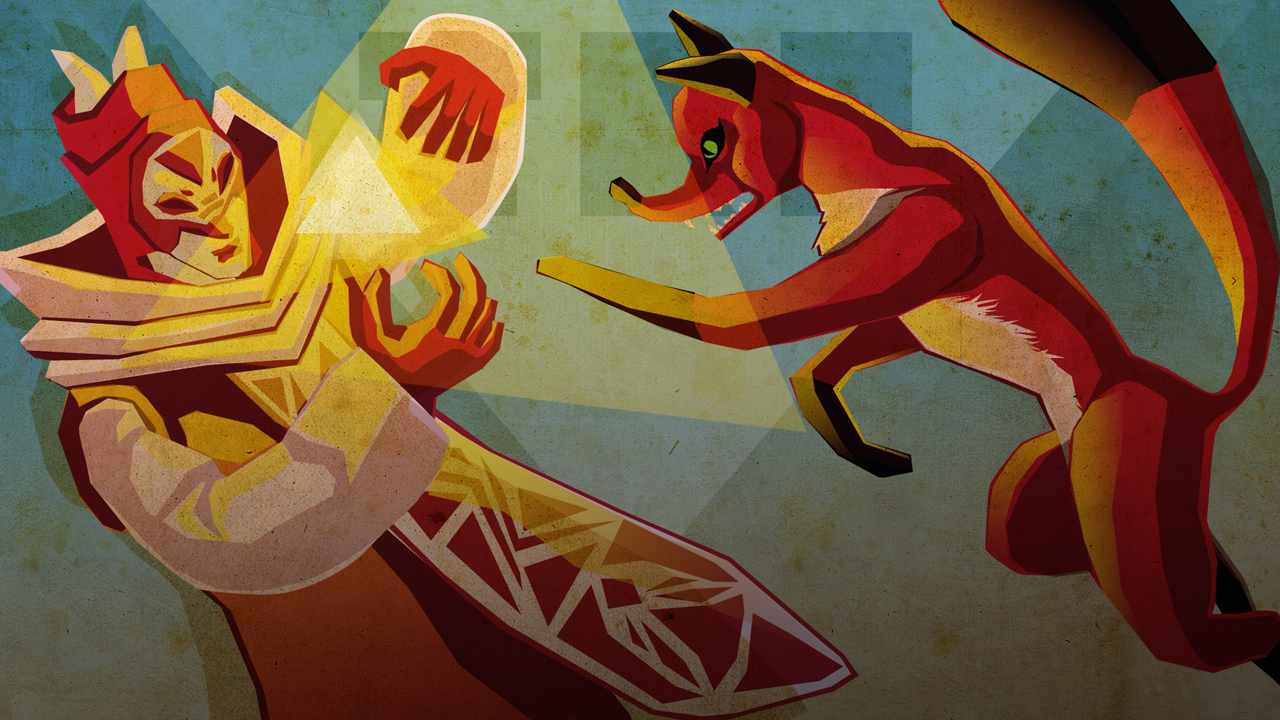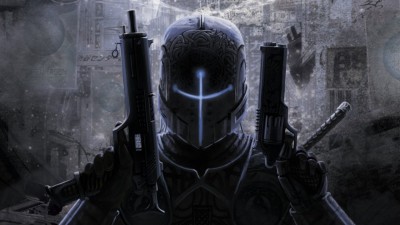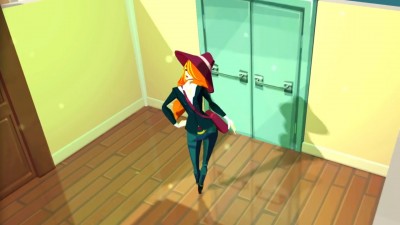It’s a fox! Kill it! Wait…sorry, wrong game. TRI is a game that is focused on puzzle solving and tranquility rather than violence and death. The player is dropped into the realm of the Odd God and is imbued with an increasing amount of powers in order to navigate the world and solve puzzles. The goal? Nothing more than gathering three totems per level in order to move on. It sounds so simple, but as is most often the case that is a bit deceiving.
 The latest release from Rat King Entertainment and publisher Rising Star is a puzzle game with an interesting approach. The story may have you scratching your head, but not to the point that it detracts from the game. Set in the realm of the Odd Gods, TRI‘s tale has you attempting to locate a fox, for reasons which become more apparent over the course of the game’s 6-8 hour running time. The main narrative has a fairy-tale like feeling to it. The characters are eccentric to say the least, but still interesting. I think it would be best to sum the story up as quirky. Fear not, however: It’s delivered in bitesize cutscenes that are beautifully created, and short enough to be entertaining without being invasive.
The latest release from Rat King Entertainment and publisher Rising Star is a puzzle game with an interesting approach. The story may have you scratching your head, but not to the point that it detracts from the game. Set in the realm of the Odd Gods, TRI‘s tale has you attempting to locate a fox, for reasons which become more apparent over the course of the game’s 6-8 hour running time. The main narrative has a fairy-tale like feeling to it. The characters are eccentric to say the least, but still interesting. I think it would be best to sum the story up as quirky. Fear not, however: It’s delivered in bitesize cutscenes that are beautifully created, and short enough to be entertaining without being invasive.
The main gameplay consists of trying to create and destroy various 2d triangles in order to navigate a 3d world and locate each of the 3 statues in the level, and which point you simply proceed to the next. Each triangle needs to have its points rooted on something, and they are limited in how large they can be. As you progress through the game you will even gain the ability to use the triangles to defy gravity and walk in every direction imaginable. It’s at this stage that the game’s developers really go to town with the level design, and environments are transformed into mind-bending constructions that would make even MC Escher blink. While I was a bit skeptical of this approach at the beginning, I have to be honest and say it grew on me.
While the triangle creation in the second chapter was less than graceful, by the end of the game I was making triangles without a second thought. It takes a little getting used to, and sometimes it can feel as though the game is having difficulty judging where you’re trying to place your anchors. That could have just been me, however, as once I got used to it, those problems seemed to manifest less and less.
Not only do you need triangles to make puzzles, but they can do so much more. You need them also to block light rays to trigger some puzzles. But wait, there’s more! You also need to delete triangles. More options to solve a puzzle? Why not! You can also use gravity to solve puzzles. What happens if you are standing on the ceiling on a triangle and you jump? Do you “fall” back to the triangle, or do you fall to the ground? What about when standing on walls? This simple premise of creating triangles to solve puzzles is taken to such an extreme that it keeps you guessing what is possible, and what rabbit (or should that be fox?) the developers will pull out of their hat next.
The game lasts for 15 chapters, but that doesn’t mean that once you reach the end you’re done. Each level has three totems that are needed in order to finish the level, but they also have so much more. There is a summary that shows up at the end of each level telling you how many triangles you created and destroyed, how long it took you to finish, and how many of the hidden idols you found.
The story is quirky and the game play is simple at its roots. The environment however is a beautiful mix of the two, with a quasi Asian-feel and a distinctive autumnal color base. Even though each level is created almost exclusively from hard edges and angles, it still manages to give a off a soft ambiance. The colors are faded enough that they take some of the bite away from all the right angles and the random floating objects also help to subtly pull you in and keep you moving forward. The buildings are also overly minimalistic. If there is nothing down a hole that you need then the hole has no bottom. If there is nothing else in front of you that needs exploring, then there is literally nothing else in front of you.
TRI: Of Friendship and Madness has restored my faith in first-person puzzle games. Its simplicity covers its underlying complexities, and the puzzles are hard enough to challenge your spatial reasoning skills, while still being doable even for this admitted amateur to the genre. If M.C. Escher and Wassily Kandinsky collaborated on a game inspired by Portal, TRI would be the result - and while that’s an odd pairing of references, it’s also one that’s wholly appropriate.
Now, if you will excuse me, I am off to check what other puzzle games Steam has to offer that I’ve missed.








